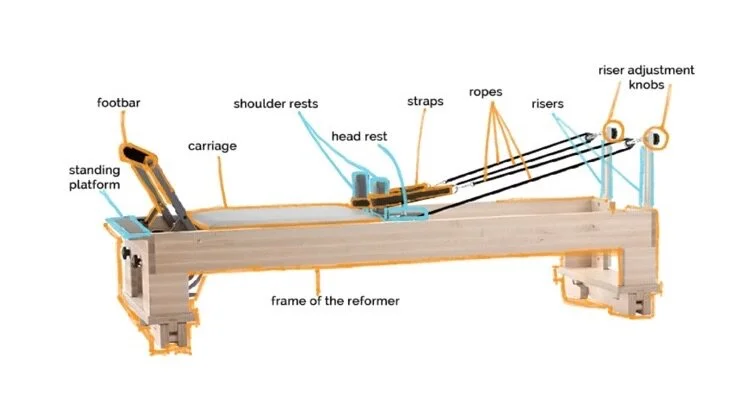THE REFORMER
The Reformer is an exceptional resistance based workout machine equipped with springs. The Reformer allows for unlimited modifications and progressions by decreasing or increasing the resistance. Get ready to work every single muscle in your body. The Reformer can be used by anyone regardless of current skill or conditioning level (no need to be intimidated by this piece of equipment) and it allows for movement to be performed with a sense of rhythm and flow. Functional movements on the Reformer decrease the amount of stress placed on your joints, promote universal muscle development, increases flexibility and improves balance.
This versatile piece of equipment was originally invented by Joe Pilates the early 1900s (various models have since been created). I work with the Studio Reformer by Balanced Body - a model designed in 1976 and to this day remains the number 1 choice of Pilates Professionals. Get familiar with anatomy of the Reformer to get more out of your work out.
The Carriage
The carriage constitutes a substantial surface of the Reformer and is moved by the stabilized part of your body. During footwork, as you press out with your feet on foot bar, you are helping slide the carriage within the frame of the Reformer as you lay flat on your back.
The Footbar
The foot bar can be used for both hands and feet and is adjustable depending on the exercise. During a given exercise transition, I will always cue the foot bar position. You are effortlessly able to change the foot bar into a high or low position by moving it into one of the notches inside the foot bar end of the Reformer frame.
The Springs & Spring Bar
Resistance along with support is provided by 5 color-coded springs, each varying in strength. Your own body weight adds on resistance along with the springs. I will always announce specific spring configuration for an exercise at hand and during most sessions will change the springs for you.
Standing Platform and Footstrap
The foot strap and standing platform are used for various exercises. The foot strap holds your feet in place during abdominal work while you are seated on the Reformer. The standing platform immobilizes one foot as you press the carriage away with another in a standing position.
Headrest
The headrest has three positions adjustable by a simple kickstand. I will cue the position of the headrest for each exercise and will modify accordingly if necessary to meet your individual alignment needs.
Shoulder Rests
The headrest is positioned between shoulder rests/blocks. These blocks keep you stable as you press out and pull in. Your shoulders rest against the blocks when laying flat on the carriage; also used as props for hands, knees and feet in other body positions. For example, when performing lunges on the Reformer one foot is against a shoulder rest and the other is placed on the floor. During this exercise, you press the carriage away with the foot that is against the shoulder rest.
Straps
The straps are used to pull the carriage in and out. During exercise transitions, I will cue the placement for the straps or hand them to you. Depending on muscle group, you can expect to hold the straps with your hands or place them on your feet for footwork. Our straps feature double loops to better accommodate for a variety of exercises.

